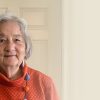What could be better news for middle grade readers than a new novel by Newbery Honoree Lisa Yee? How about that the book is the start of a new series by the bestselling, groundbreaking fan favorite—complete with illustrations by Caldecott Medalist Dan Santat! Published in January, The Misfits: A Royal Conundrum (Random House, 2024), launched Yee and Santat’s quirky collection of crime-fighting kids on their first set of adventures, with more action-packed, wacky antics on the way.
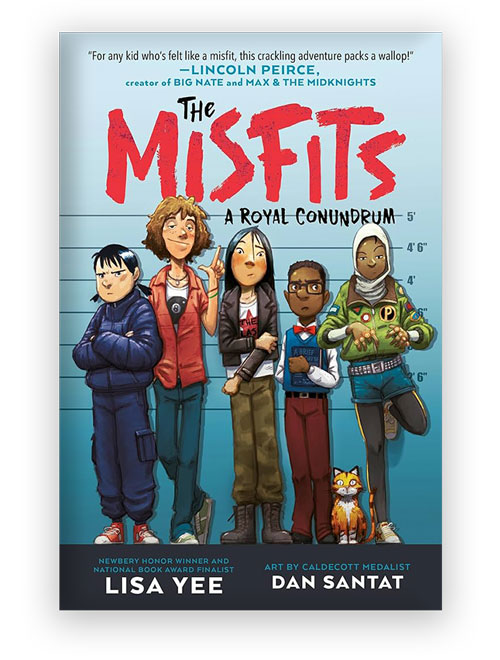
Here, Yee talks with Lisa Bullard about powerful moments of connection with her readers, her secret of success (daring to be awful), and how her middle school persona as a “total dork” helped shape her newest series.
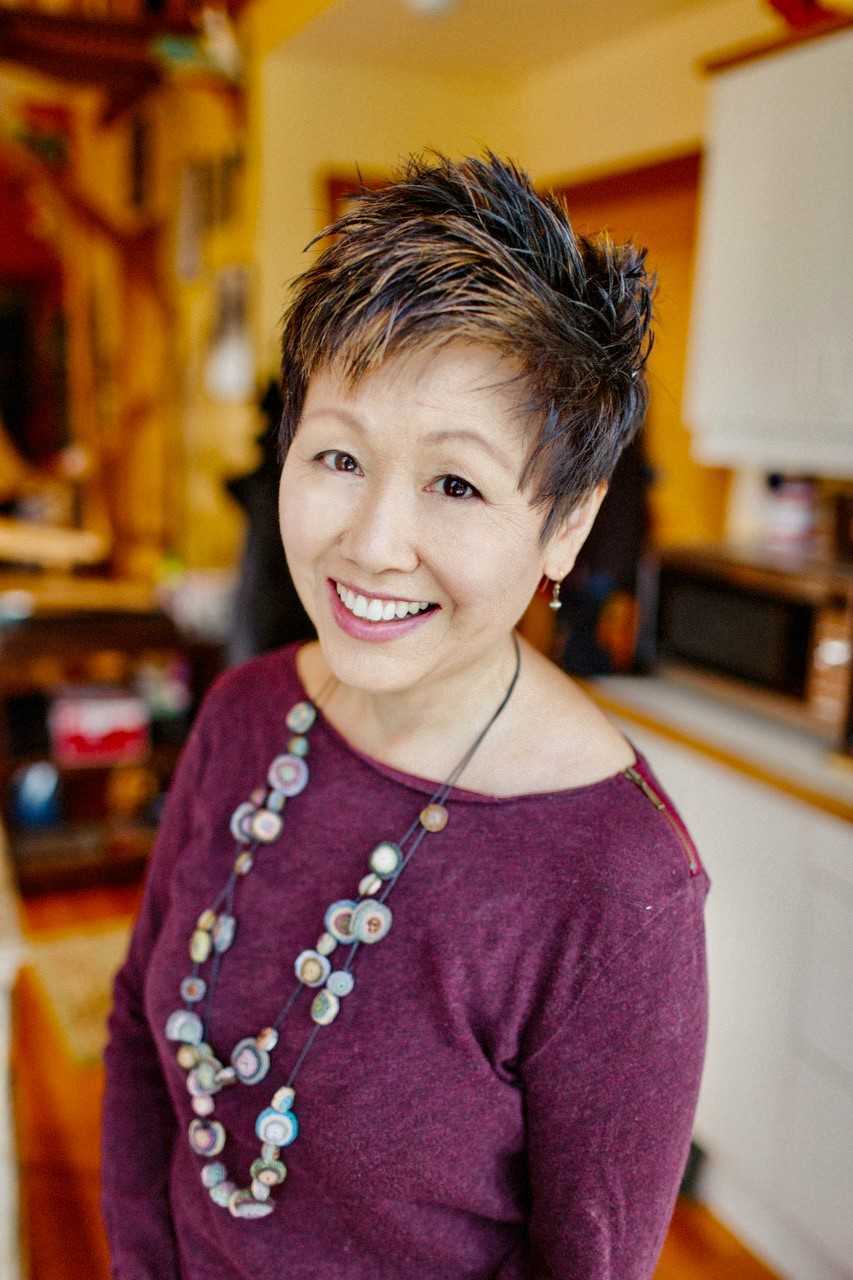
What inspired the idea of a diverse group of misfits who are a secret team of middle school crime fighters?
Out of nowhere, I was hit on the side of the head by two words: Ballerina Battalion. At first I thought it would be fun to write about crime-fighting ballerinas. (Imagine the leaps and kicks!) But as I started to noodle around with the idea, I remembered my own middle school days, where I was a total dork—an awkward loner with a big imagination. I’d read Nancy Drew and Encyclopedia Brown and think, “I could solve crimes!” Later, I took kung fu, and in college I fenced. I also enrolled in a private investigator class for fun, and when I was writing the DC Super Hero Girls novels, I traveled to Japan and had ninja training. Yet if you look at me, I am pretty unassuming—invisible, actually.
Eventually, the ballerina battalion morphed into a group of five awkward loner kids who you’d never even notice. But isn’t that what you’d want from crime fighters? To blend in and be able to move around unseen? I was terrible at gymnastics, so Olive, who’s at the center of the book, became a stellar acrobat—because as authors we get to take our lives, turn them upside down and inside out, and become on the page who we’ve always wanted to be.
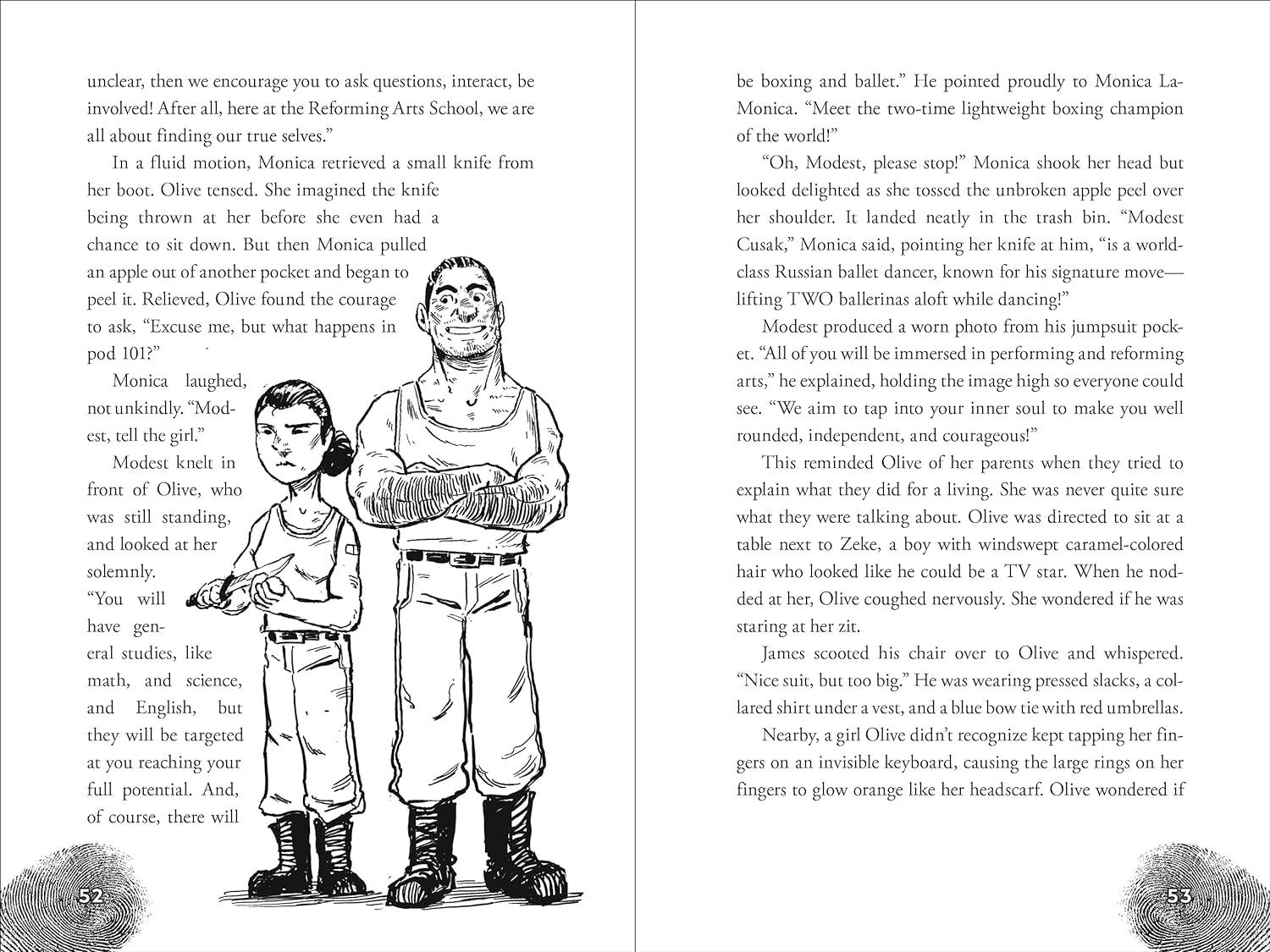
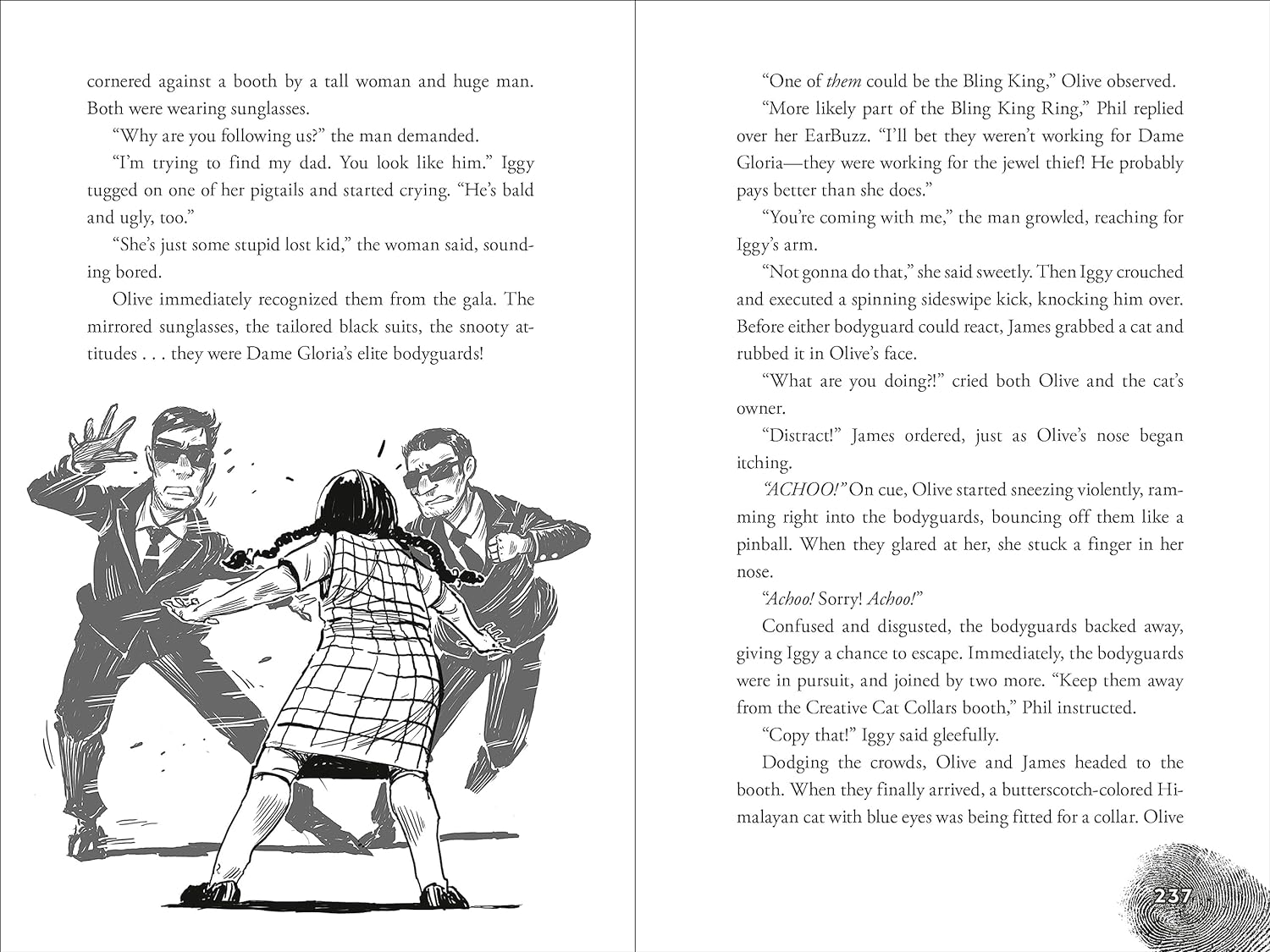
Spreads from The Misfits: A Royal Conundrum
As authors we get to take our lives, turn them upside down and inside out, and become on the page who we’ve always wanted to be.”
The Misfits has a whole different feeling than Maizy Chen’s Last Chance (Random House, 2022)—but both books feature characters who are thrust into new environments, family secrets coming to light, and food playing into the plot. How else would you compare/contrast the two books?
Whoa! You’re right about the new environments, family secrets, and food. Though there’s an overlap in themes, the two are totally different books—and I was in totally different mindsets when writing each. Maizy Chen’s Last Chance is a blend of contemporary and historical fiction, and I dug deep into the journey of Chinese Americans. Maizy’s story was grounded in history, and I even wove in stories from my own family. I was writing during the peak of COVID and there was so much anti-Asian hate on the news that I was scared. I wanted to make a difference but didn’t know how until I realized I could tell this story.
By the time I began The Misfits, I wanted/needed to write something more irreverent and lighthearted, yet it still needed to have compassion and heart. The Misfits was born out of my overactive imagination when I was a kid. It’s fun and silly and full of humor and outrageous adventures. Chinese food figures prominently in Maizy Chen’s Last Chance, and pastries are a key component in The Misfits. (I LOVE food and writing about it and used to write/produce food commercials.) As for the setting of both books, I wanted to drop my main characters into a totally new environment and see what happens when they face the unknown.
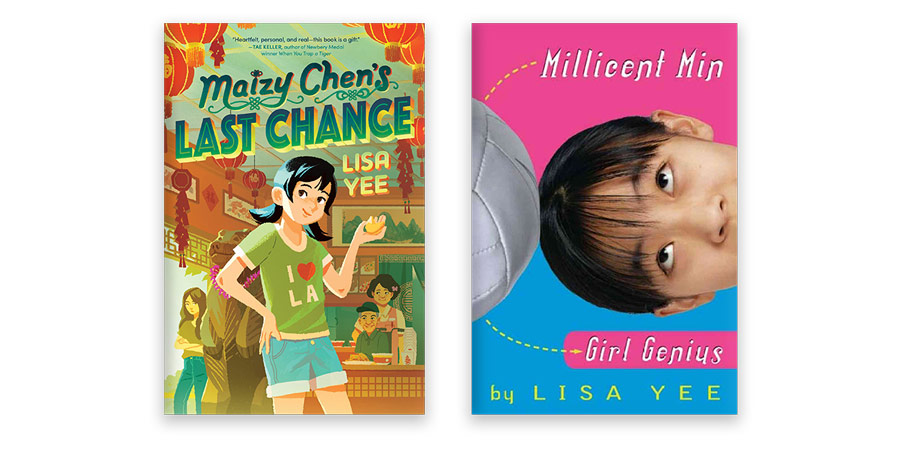
Humor is a hallmark of so many of your books and it’s certainly a key part of The Misfits. Does “writing funny” just come naturally to you? Can you share some tips and techniques with student writers?
When my first book, Millicent Min, Girl Genius (Arthur A. Levine Books, 2003), won the Sid Fleischman Humor Award over twenty years ago, I was shocked—because I didn’t know I had written a funny book. When I told my best friend about the award, he said, “Why would they give that to you?” At first I was taken aback, but then he added, “That book is so sad, it made me cry.” Then I realized that funny and sad can reside in the same novel. In fact, the sadder one of my books is, the more humor I add to balance out the story.
I don’t tell jokes, but I do have a quirky view of the world. All my characters have their own unique insights, too. What’s funny for one character, might not be for another. You need to know how they react to situations and what they might say. Also, does the scene bring a smile to you? Sometimes a lighthearted chuckle is as satisfying as a huge guffaw. Humor doesn’t necessarily need to be LOL every time.
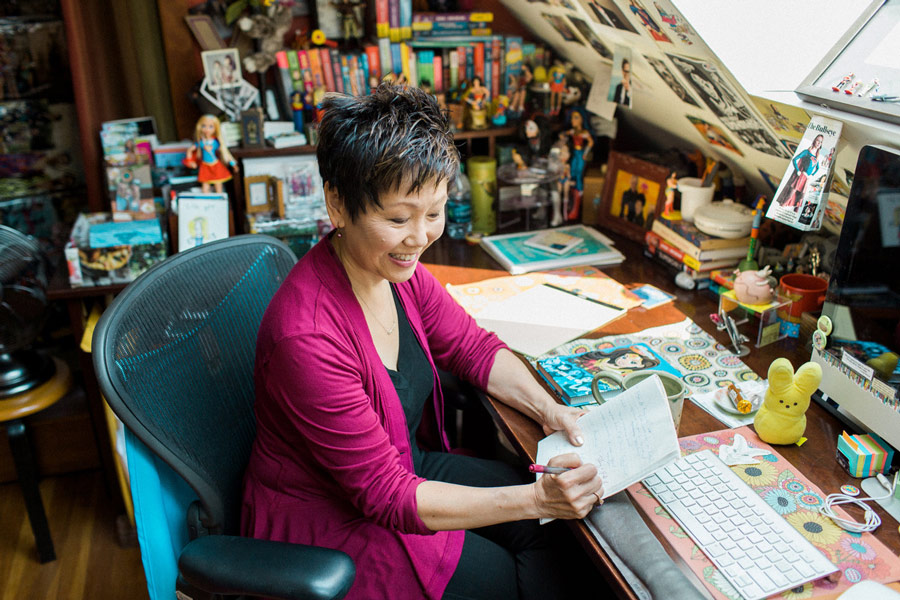
As you mentioned, it’s now been over twenty years since your first book was published. How have things changed in that time for you as a writer? Have you noticed any differences in young readers now versus young readers twenty years ago?
I was so scared and nervous when I wrote Millicent’s story. It took six years from when I started writing to when it finally came out. I was convinced that I was a one-hit wonder. However, since then I’ve written over twenty novels, and they no longer take six years to write. These days I’m writing a book a year. That’s because I’m no longer scared, although I’m still nervous!
As for readers back two decades ago versus now—I honestly don’t see a difference. What they wanted then, and what they want now, is the same thing: a good story, a page turner, and characters that stay with you long after the book is finished.
What would you like to share with readers about your growing-up days?
I was a quiet kid. An introvert, but not necessarily shy. I pretty much lived in the library, and my greatest joy was coming home with a huge armful of books. I wrote the first story that I can remember at age seven. It was about a giant yam and a very small farmer, and it was TERRIBLE! But I kept writing and reading. I’d even read under the covers at night with a flashlight. One of the best parts about being a grownup is that you can keep the lights on at night when you read.
One of the best parts about being a grownup is that you can keep the lights on at night when you read.”
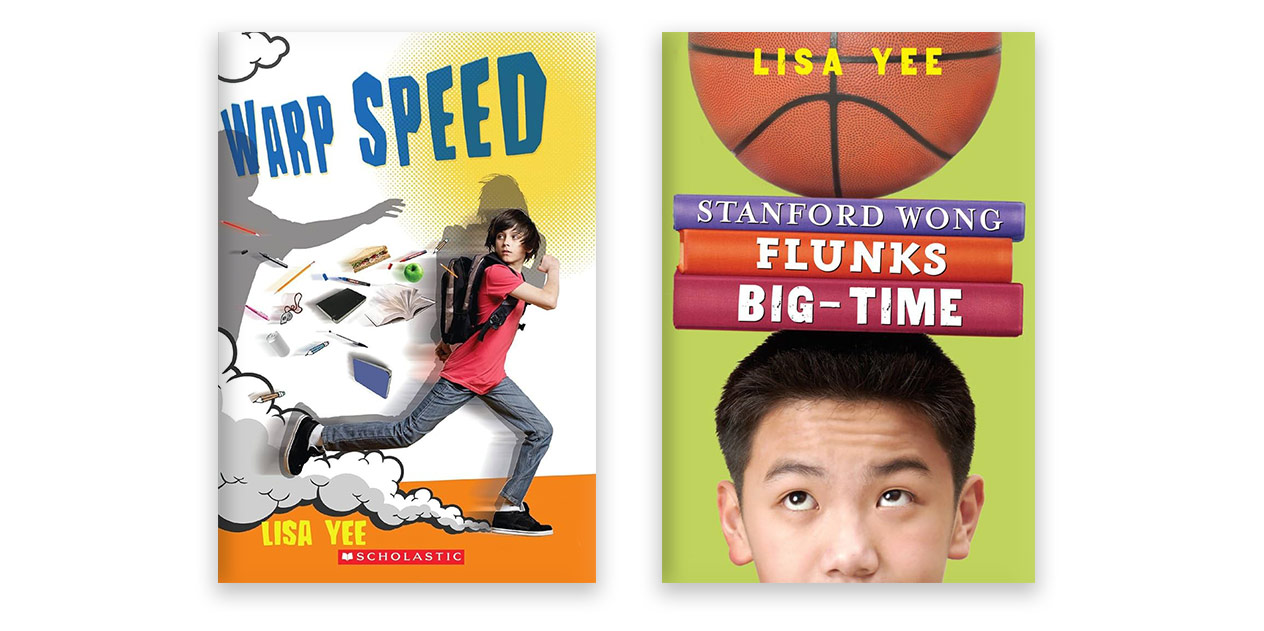
What’s your favorite anecdote about a reader’s response to one of your books?
I love it when I get letters from readers who say that they are “exactly” like a character in one of my books. It means that they’ve connected with the story. One of my favorite letters was from an adult. He was a soldier in the U.S. Army and came across Warp Speed (Arthur A. Levine Books, 2011) in the library at his miliary base. On a whim, he picked up the book and read it. Then he wrote me a three-page handwritten missive about how he was just like Marley, the main character. He was bullied and beaten up in school, but like Marley he could run fast. And running was his way out and where he found confidence. He had such a connection with the character and his story that it felt like it was his own. I still have that letter and keep it tucked away in the novel.
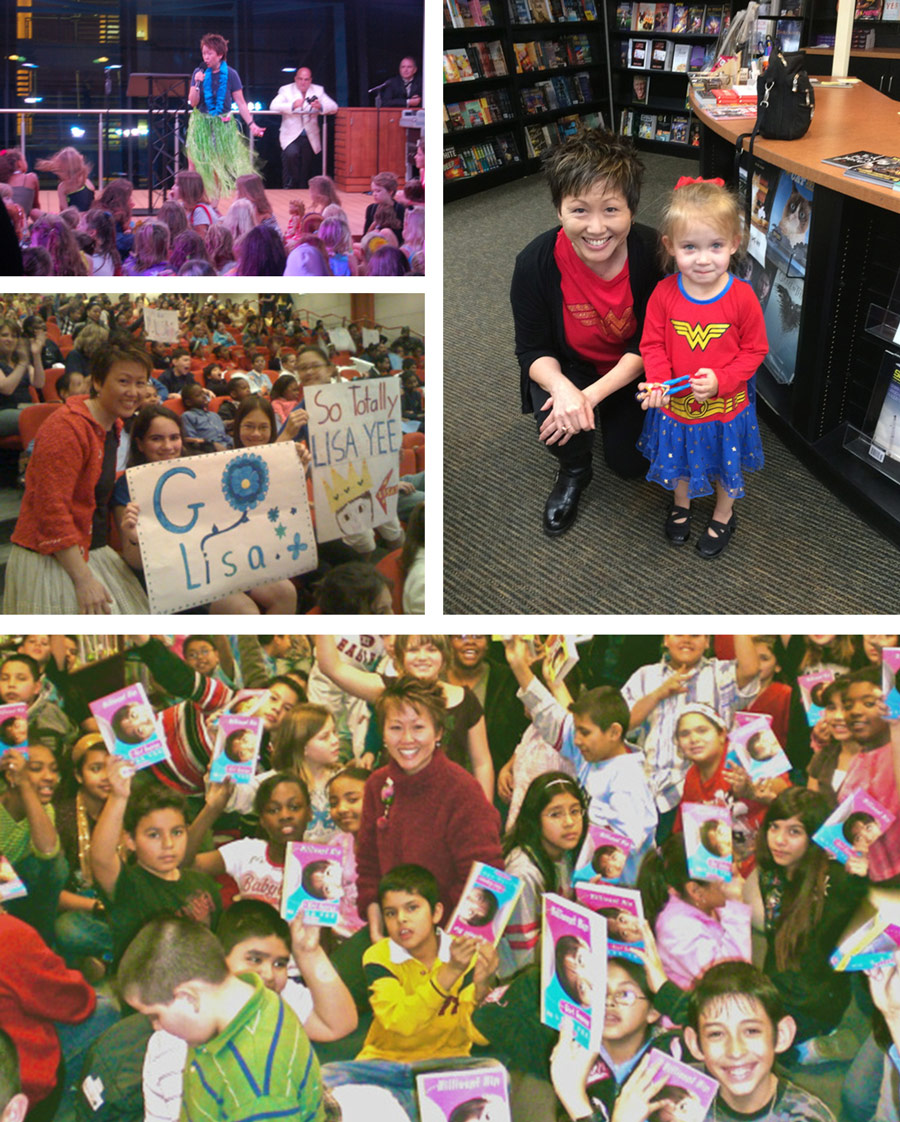
In what ways have your young readers inspired you?
Interestingly, I wrote Warp Speed because one time, when I was doing a school visit, a student said, “I need to know what happens to Marley.” Marley was a minor character in Stanford Wong Flunks Big-Time (Arthur A. Levine Books, 2005) who was bullied. The student’s teacher and librarian came up to me later and said they were shocked that he spoke up in front of the whole school—because he had never spoken in class before. They said, “He is Marley.” And I knew I had to write Marley’s story, for him and for anyone who’s been bullied.
What’s your best advice for young people who want to be writers or pursue some other creative activity?
Read, read, write, read, and then write some more. Whatever your passion is, don’t be afraid to try, and then try, try again. I like to ask, “What would you do if you knew you couldn’t fail?” I didn’t make that up; I think I read it on a coffee mug! But it’s a great question. An athlete doesn’t just get up one day, having never tried a sport, and say, “Hey! I’m brilliant at this!”
Don’t be afraid to be awful. Even though I’ve written over two dozen books, my first drafts are HORRIBLE! But it doesn’t bother me, because I know that it’s just a starting point . . . and that if I keep at it, each draft will get better. Same with any creative activity. Dare to be awful!
Don’t be afraid to be awful. Even though I’ve written over two dozen books, my first drafts are HORRIBLE! But it doesn’t bother me, because I know that it’s just a starting point.”
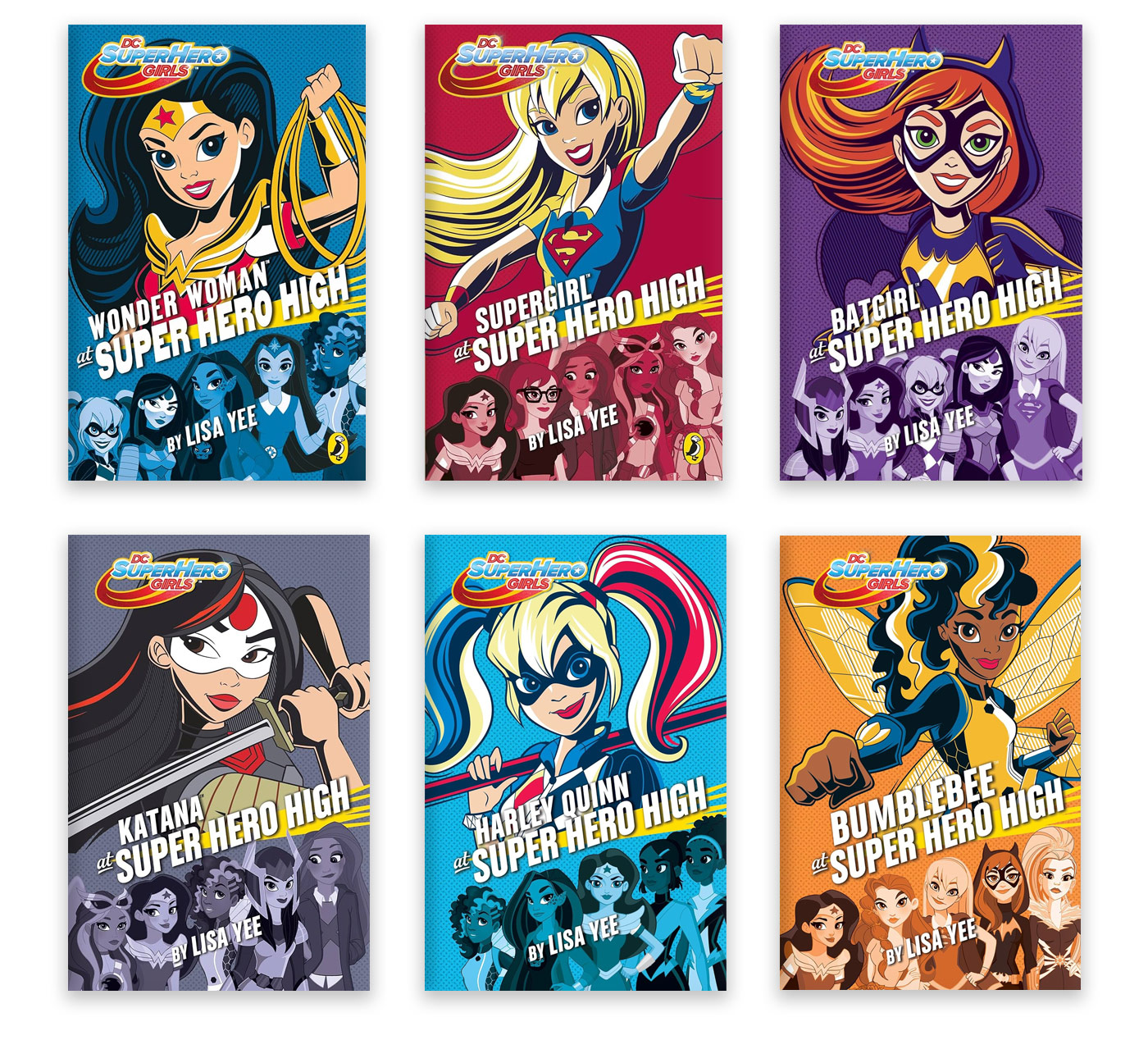
What classified secrets can you reveal about the Misfits’ next case? Are you able to share details about any other forthcoming books?
Ha! You are so sneaky asking me this. The second Misfits book was so fun to write. Without giving too much away, you can count on Olive and the rest of the super-secret undercover agents finding themselves in situations that will test all their skills and turn their worlds upside down. There are mysterious earthquakes, mysterious messages, and a ghost ship . . . and that’s just for starters!
I’ve also got other books coming—but I’m under strict orders not to talk about them.
What is your favorite part of writing for young people?
I peaked in middle school. Snort! So, to be able to write books featuring young people is a way to channel everything I’ve experienced—and then change it all up! For me, books and libraries were my safe places; they still are. When I hear from readers that my stories mean a lot to them, it makes me want to cry. Because even though we may not have met in person, connecting over a book can be just as powerful.
When I hear from readers that my stories mean a lot to them, it makes me want to cry! Because even though we may not have met in person, connecting over a book can be just as powerful.”
What are the best ways for educators and librarians to connect with you or to follow you on social media?
I’m on social media more than I care to confess! You can find me on Instagram, but I really connect with educators and librarians on Facebook, where I post about books, writing, desserts, and my daily walks when I listen to murder mysteries on high speed to get my heartrate up. Also, there’s a link to email me on my website: lisayee.com.



